IN THE FOOTSTEPS OF DAVID R. ROSS "LANARK" |
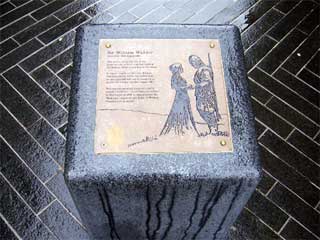 |
 |
I had never been to LANARK before except a brief visit to the MEDIEVAL FESTIVAL and given the town's links to Wallace this was something I decided could not go on any longer. So with my trusty copy of DESIRE LINES as reference I made my way down Lanark High Street towards St Nicholas' Church, which is fronted by a large statue of Wallace which certainly is not one of my favourites, I'll stop short of calling it ugly. Over to the left of the Church you will notice a plinth set in a gap between two buildings. It replaces the original which stated:" Here stood the house of William Wallace who in Lanark in 1297 first drew sword to free his native land" This new plinth was erected in 2005 to celebrate the 700th anniversary of the death of Wallace," Guardian Of Scotland" Lanark lies high on the east bank of the River Clyde. It's strategic location guarding the Clyde Valley was first recognised by the Romans who had a fort built on what is now known as Castle Hill, an outcrop south west of the centre of the town which drops steeply into the valley. The Romans were followed by many others in fortifying this site and in 978 King Kenneth II held at least one parliament here. Lanark Castle was home to David I and William the Lion: and in 1140 David granted Lanark the status of a ROYAL BURGH. Under Alexander III, Parliaments met in Lanark in 1293, 1294 and 1295. |
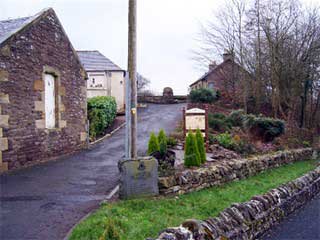 |
 |
"BRAVEHEART" was a fantastic film that did much for the Scottish sense of identity, and awoke a new wave of Nationalism though at some cost to our history. The real story of how Wallace's war with England began thus: Wallace and Sir John Graham Jr. had just finished attending Sunday mass at St. Kentigern Church, and were walking down Lanark High Street when one of Heselrig's soldiers stood directly in Wallace's way and started to taunt him. Immediately more English soldiers joined in the taunting, then some more. Instead of being drawn in, Wallace kept his cool, surveyed the landscape and realised that all was not what it seemed, the locals were looking less than relaxed and there seemed to be English soldiers disguised as locals loitering about. Sensing all was not well and his current position open to attack from all flanks. Wallace and Sir John Graham Jr. immediately retreated to one of the side streets that lead off the High Street. |
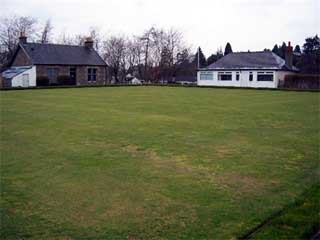 |
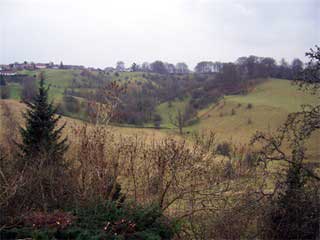 |
| It didn't take long for the English ranks to swell to almost two hundred in number, commanded all the time by Heselrig who was eagerly anticipating moving in for the kill, when the order was given the English soldiers could only confront Wallace and Sir John Graham Jr. two abreast at any one time due to the width of the side street, (even here Wallace was using Guerrilla tactics on the English) The majority of the English soldiers could only look on as their comrades were slaughtered further up the field, as William Wallace and Sir John Graham Jr. fought a rear guard action. Leaving behind a trail of fifty dead or dying soldiers in their wake, they made for Marion's house at the foot of the High Street, where Wallace and Sir John Graham Jr. were hastily admitted. They fled immediately out the back door, through the garden, over the town walls and headed for their hideout in the Cartland Crags. In close pursuit were the remaining English soldiers and Sir William Heselrig. Marion desperately played for time to allow her husband to flee, but Heselrig became evermore impatient at her delaying tactics and smashed down the front door. It immediately dawned on Heselrig that Wallace had escaped his clutches and his anger was unleashed on poor Marion, her death it seems was not as quick as was portrayed in the movie, finally her house and belongings were torched, it is thought she was killed before where St Nicholas' Church stands today. |
 |
 |
On hearing the news of his wife's murder, Wallace was inconsolable and consumed with grief and rage. Now the English Had murdered both his wife and father, and persecuted his mother until her recent demise. This event proved to be the turning point in Wallace's life as previously he seemed content just to liberate Scotland, but now it grew into a personnel vendetta against the English. But firstly, as honour demanded it, he must return to Lanark to avenge the death of his wife. Wallace led the assault on Heselrig's abode; he kicked the front door down and stormed up the stairs to confront a startled Heselrig. Heselrig immediately jumped out of his bed, only to be struck down by an almighty blow from Wallace's sword. The headless body slumped to the floor lifeless, Wallace sealed this bloody act of vengeance by torching Heselrig's house and dismembered the body. |
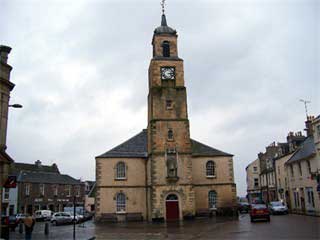 |
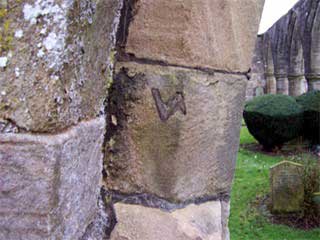 |
Under the hands of Sir John Graham Jr., the Captain of the Lanark garrison, Robert Thorn, also suffered the same fate as Heselrig. Then for the rest of the night, Wallace and his men went on a killing frenzy, slaughtering in total two hundred and forty men of English origin. Whilst the surviving English nationals from the night of carnage (priests, women and children) were forcibly evicted from the town and left destitute.This was the spark that lit the revolt that culminated in the Battle of Stirling Bridge on 11 September 1297. |
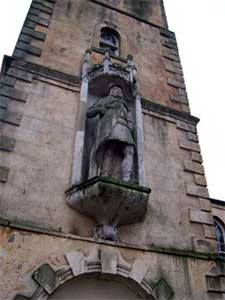 |
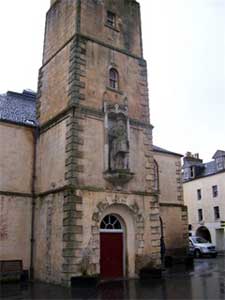 |
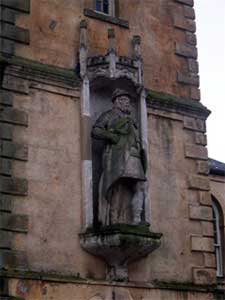 |
Next we visited the graveyard at St. Kentigern Church, this is said to be the very place that William first set eyes on Marion and later marry her, this is certainly feasible, Wallace was known to have attended Mass here and it was the only Church in Lanark at that time. Also within this graveyard there is some interesting stones relating to the COVENANTERS, a subject which I hope to cover more fully in the future. In more recent centuries Lanark has served as a focus for a wide rural community, and its livestock markets were particularly important. Perhaps the biggest change came from 1785 when the immense power of the water tumbling down the River Clyde in the valley below began to be harnessed by the vast cotton mills built at NEW LANARK, just a mile from the existing town. |
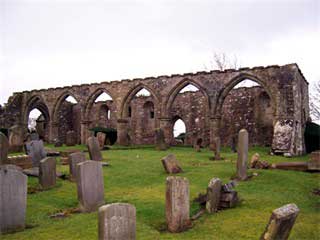 |
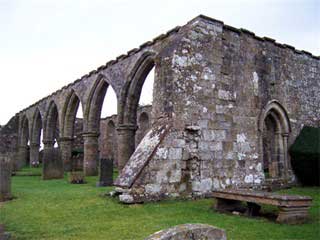 |
 |
© Paisley Tartan Army 2008-09
